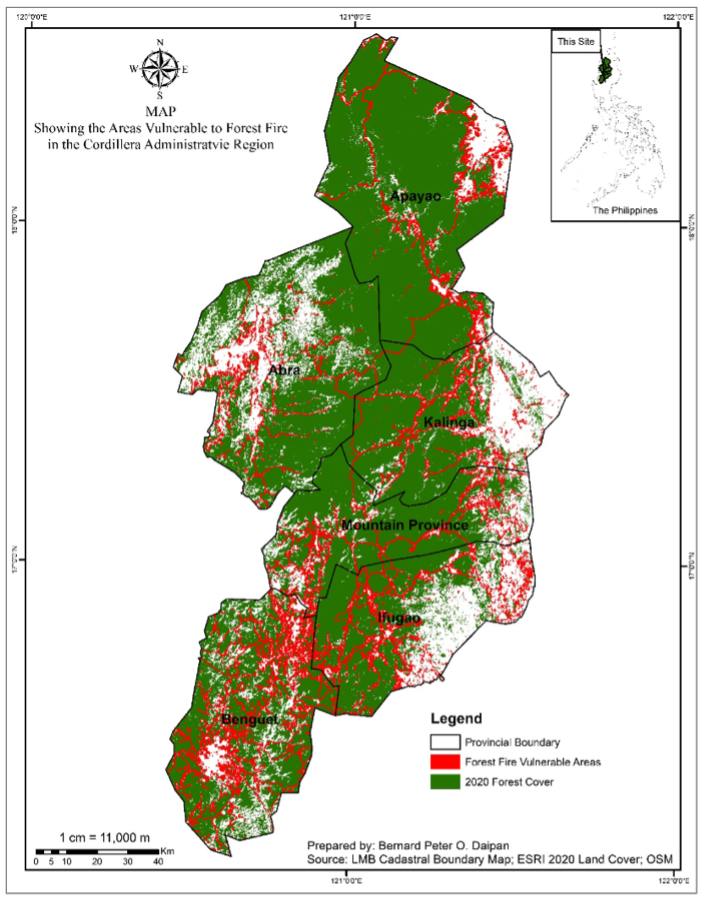VOLUME 16 NUMBER 2 (July to December 2023)

SciEnggJ. 2023 16 (2) 265-274
available online: August 18, 2023
*Corresponding author
Email Address: bp.daipan@bsu.edu.ph
Date received: March 31, 2023
Date revised: June 23, 2023
Date accepted: July 31, 2023
DOI: https://doi.org/10.54645/2023162KDL-34
ARTICLE
Mapping Forest Vulnerability to Fire and Landslides in the Cordillera Region, Philippines
2College of Forestry and Natural Resources, University of the Philippines
Los Baños, Laguna, 4030, Philippines
Forest fires and landslides pose significant threats to the Cordillera's forests. Despite their detrimental impact, the vulnerability of forests in this region has received limited attention in previous studies. To address this research gap, this study employs satellite imagery and remotely sensed datasets to identify forest areas in the region that are susceptible to fires and landslides. In 2021, the forest cover in the region spans approximately 1.35 million hectares, accounting for over 73% of its total land area. However, approximately 116 thousand hectares, or 8.5% of the forest in the region, are prone to fires. The study notes an increasing trend of fire incidents and burned areas observed in both natural and plantation forests in the region. This trend could be linked to the region's rising temperatures and extended drought. In the next four decades, a projected rise in temperature of 1.1 to 1.3°C and a decrease in precipitation (-8.8 mm) during the dry season could result in more severe forest fires, larger burned areas, and longer fire durations. Furthermore, nearly 73% of the region's forests are vulnerable to landslides at a high to extremely high level. This vulnerability is reflected in the 182 landslides that occurred in the region between 2007 and 2018. The output of this study could be used in the adaptation and mitigation plans, and risk reduction activities in the region. The findings of this study highlight the need for urgent action to prevent further forest degradation due to anthropogenic and natural hazards.
© 2025 SciEnggJ
Philippine-American Academy of Science and Engineering